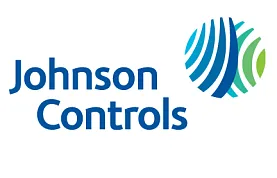
From refrigerant container color changes to new chronically leaking appliance reporting, here is what to plan for in 2020.
1. Changing Refrigerant Container Colors
Holding the number one spot for what to plan for in 2020 is the changes to refrigerant container colors. The Air-Conditioning, Heating, and Refrigeration Institute’s (AHRI) Guideline N, Assignment of Refrigerant Container Colors, calls for all refrigerant containers (except for recovered and recycled refrigerants) to have one uniform paint color, RAL 7044 (a light green gray), by January 2020.
The guideline makes clear that existing inventories are not required to be repainted, and flammable refrigerants must still have a red band on the top of the container.
With more and more refrigerants being introduced on the market, this update to AHRI’s Guideline N is meant to help eliminate confusion for refrigerant handlers. (Guideline N does provide a means for PMS colors to still be used on printed materials.)
Commercial refrigeration stakeholders should be well-aware by now of the U.S. Department of Energy’s latest energy conservation standard for walk-in coolers and freezers (WICF) taking effect in 2020.
The standard puts in place minimum energy efficiency requirements for WICFs that have a total chilled storage area of less than 3,000 square feet. DOE enforcement takes effect on January 1, 2020, for WICFs with medium-temperature dedicated condensing systems and on July 10, 2020, for low-temperature dedicated condensing systems.
Number three on our list of what to plan for in 2020 is the EPA Section 608’s new chronically leaking appliance reporting requirement for regulated refrigeration and air-conditioning appliances. Specifically, if a regulated appliance leaks 125% or more of its full charge in a calendar year, it’s considered a chronically leaking appliance, and one must now submit a report to the EPA by March 1 of the subsequent year.
As many regulated facilities are already well-aware, the California Air Resources Board (CARB) annual refrigerant reporting window opens January 1 and closes March 1. Medium and large facilities, as defined in CARB’s Refrigerant Management Program (RMP), are required to report.
When it comes to refrigerant compliance in the state of California, however, the RMP is not the only factor that one should take into consideration for 2020. There’s also the HFC prohibitions, a part of the California Significant New Alternatives Policy (SNAP).
Most notably, these prohibitions affect retail food refrigeration and are end-use specific. In fact, as of January 1, 2020, several retail food refrigeration end-uses are impacted. See the chart below for details. (The effective dates refer to the date the equipment was manufactured.)
| Prohibited Substance(s) | Effective Date | |
| Stand-Alone, Medium-Temperature Units (New) | FOR12A, FOR12B, HFC-134a, HFC-227ea, KDD6, R-125/290/134a/600a (55.0/1.0/42.5/1.5), R‑404A, R‑407A, R-407B, R‑407C, R‑407F, R‑410A, R‑410B, R-417A, R‑421A, R‑421B, R‑422A, R‑422B, R‑422C, R‑422D, R‑424A, R‑426A, R‑428A, R‑434A, R‑437A, R-438A, R-507A, RS‑24 (2002 formulation), RS‑44 (2003 formulation), SP34E, THR‑03 | January 1, 2020 |
| Stand-Alone, Low-Temperature Units (New) | HFC‑227ea, KDD6, R‑125/290/134a/600a (55.0/1.0/42.5/1.5), R‑404A, R‑407A, R‑407B, R‑407C, R‑407F, R‑410A, R‑410B, R‑417A, R‑421A, R‑421B, R-422A, R‑422B, R‑422C, R‑422D, R‑424A, R‑428A, R-434A, R‑437A, R‑438A, R‑507A, RS‑44 (2003 formulation) | January 1, 2020 |
Last but not least on the list is complying with the first F-gas service ban that takes effect January 1, 2020.
Commercial refrigeration equipment with popular HFC refrigerants could be impacted, and it’s best for those with affected refrigerant to have a plan now. Check out our new free guide on the service ban now.

